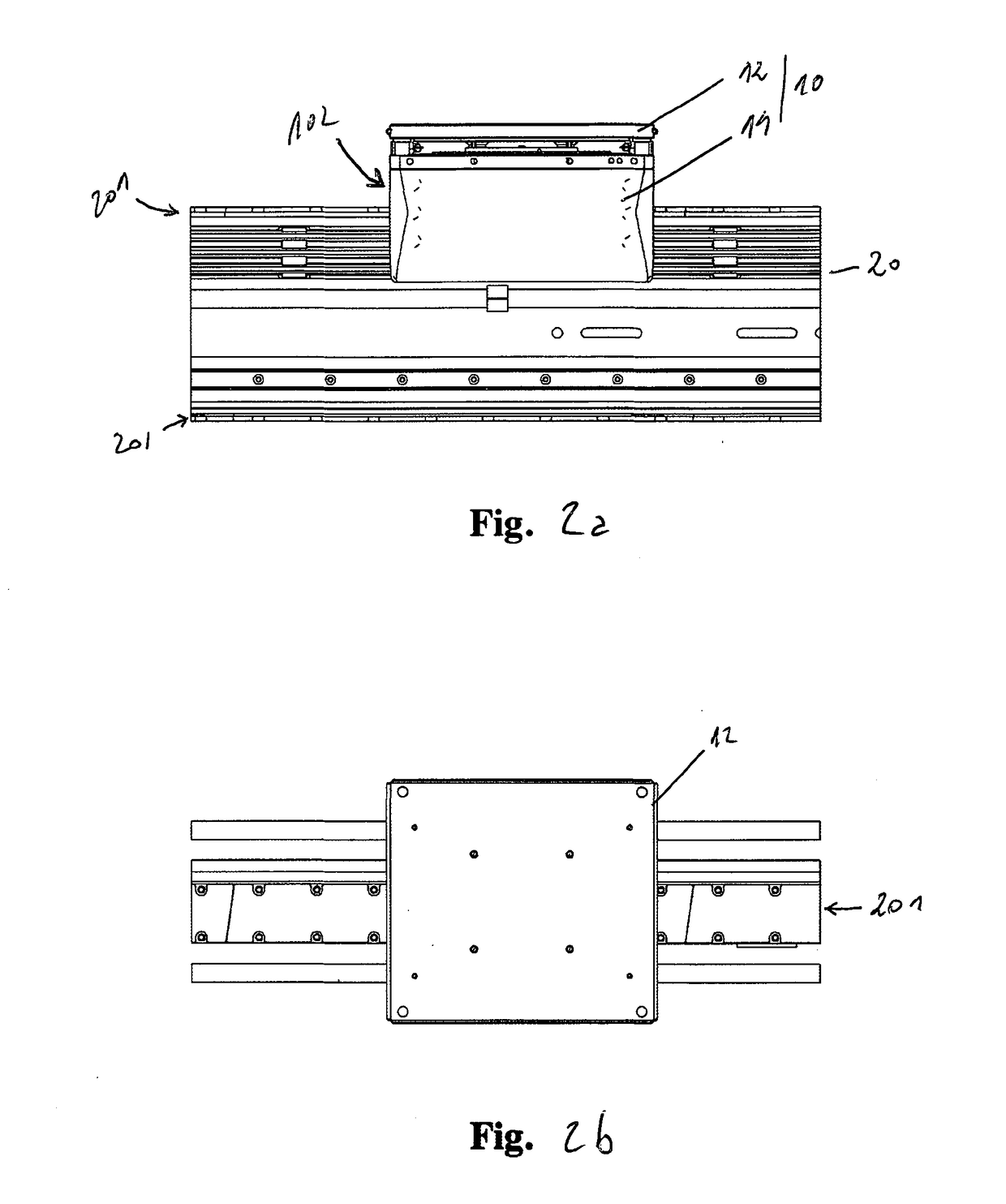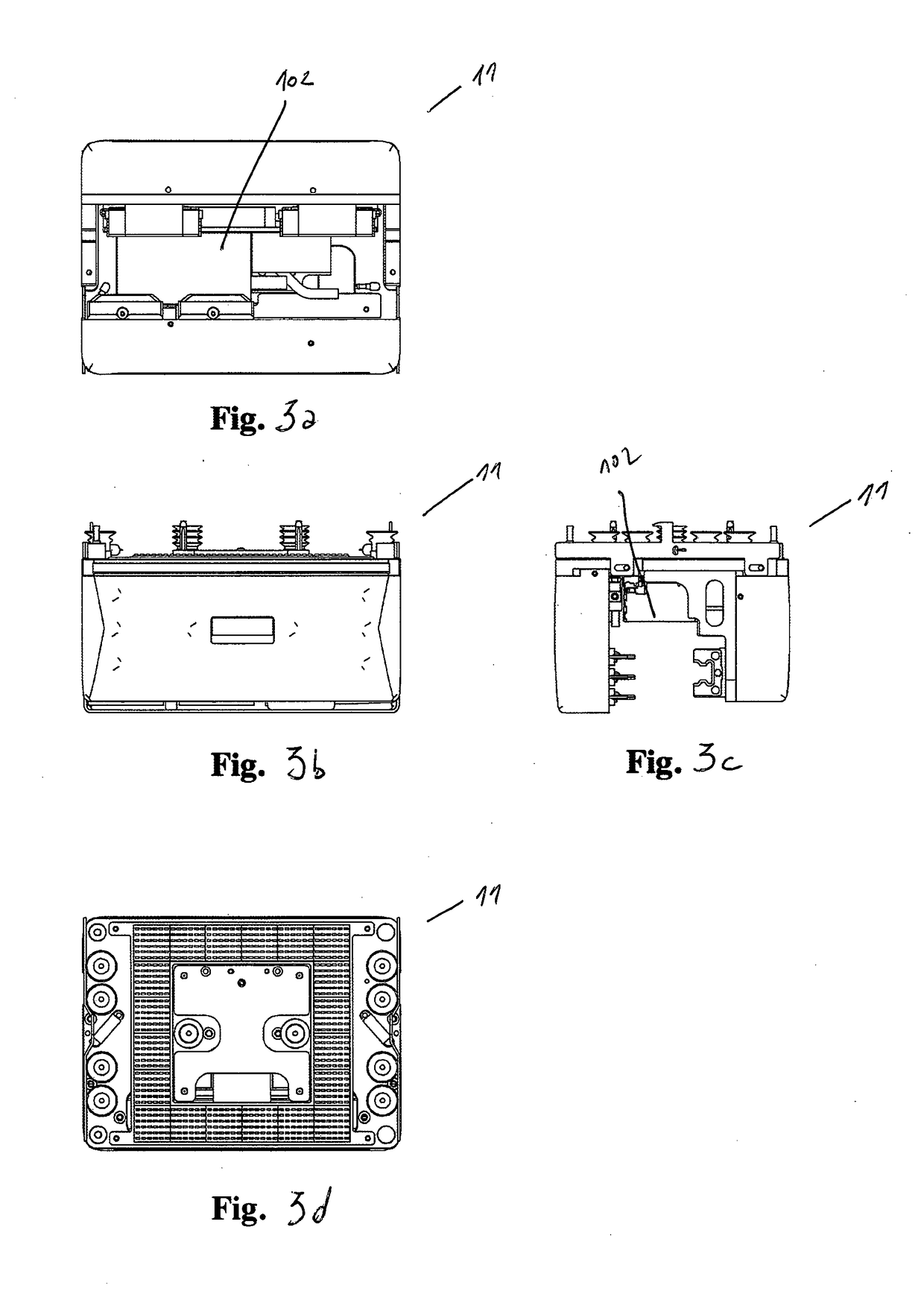Handling system with independent and coordinated shuttle, for industrial automation
a technology of industrial automation and coordinated shuttles, applied in the direction of conveyers, electrical apparatus, semiconductor/solid-state device manufacturing, etc., can solve the problems of small versatility, observational control problems, and the interaction between the coils and the single shuttle, in order to ensure independent missions, so as to reduce wear and the cost of use and maintenance, and reduce the number of moving components , the effect of high positioning precision
- Summary
- Abstract
- Description
- Claims
- Application Information
AI Technical Summary
Benefits of technology
Problems solved by technology
Method used
Image
Examples
Embodiment Construction
[0059]With reference to the Figures (FIGS. 1-9) as well, the invention implements said solution of linear synchronous motor LSM drive of the moving coils type in order to create an advantageous modular and integrated system (1) of industrial handling with shuttles; in particular, a system (1) is obtained in which multiple shuttles (10), of the smart type, that is to say, provided with logic on the shuttle processable according to signals received from on-board optical or electromagnetic sensors or received via antenna, translate on the same rail (20) in an independent but coordinated, synchronous and / or asynchronous, way. Each shuttle (10) is mainly made up of two portions:[0060]a lower portion is a self-propelled sliding shoe (11), which is conventionally called sliding shoe or mover, which acts as a slider constrained to the rail (20) in a removable way and comprises all the active means for performing the movements and enabling the secondary drives, according to the secondary wor...
PUM
 Login to View More
Login to View More Abstract
Description
Claims
Application Information
 Login to View More
Login to View More - R&D
- Intellectual Property
- Life Sciences
- Materials
- Tech Scout
- Unparalleled Data Quality
- Higher Quality Content
- 60% Fewer Hallucinations
Browse by: Latest US Patents, China's latest patents, Technical Efficacy Thesaurus, Application Domain, Technology Topic, Popular Technical Reports.
© 2025 PatSnap. All rights reserved.Legal|Privacy policy|Modern Slavery Act Transparency Statement|Sitemap|About US| Contact US: help@patsnap.com



